 W
WEmacs or EMACS is a family of text editors that are characterized by their extensibility. The manual for the most widely used variant, GNU Emacs, describes it as "the extensible, customizable, self-documenting, real-time display editor". Development of the first Emacs began in the mid-1970s, and work on its direct descendant, GNU Emacs, continues actively as of 2020.
 W
WAquamacs is an Emacs text editor for macOS. It is based on GNU Emacs, currently tracking the GNU Emacs version 25.3 branch. Although GNU Emacs has had native UI support on macOS using the Cocoa API since version 23, Aquamacs modifies the user interface to conform with macOS standards in favor of Emacs standards.
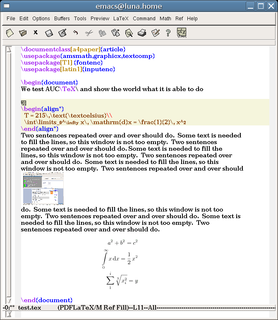 W
WAUCTeX is an extensible package for writing and formatting TeX files in Emacs and XEmacs.
 W
WConkeror is a Mozilla-based web browser designed to be navigated primarily by a computer keyboard. Its design is mainly patterned after the text editor GNU Emacs, with some influence from other programs, including vi.
 W
WEmacs Web Wowser is a web browser written entirely in Emacs Lisp. It became part of GNU Emacs starting with version 24.4. If Emacs is compiled with the suitable image libraries, and is used in a graphical environment, it can render images inline directly into Emacs's display buffer. It requires an Emacs built with libxml2 support. Written by Lars Magne Ingebrigtsen, it was originally developed as part of the Emacs mail reader Gnus, to display HTML-formatted email, but with the addition of HTTP support from Emacs' url.el package it became a fully-fledged browser.
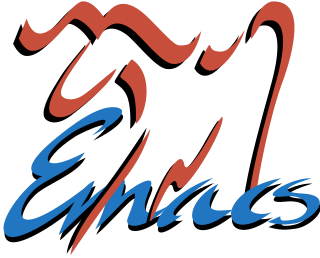 W
WGNU Emacs is a free software text editor. It was created by GNU Project founder Richard Stallman. In common with other varieties of Emacs, GNU Emacs is extensible using a Turing complete programming language. GNU Emacs has been called "the most powerful text editor available today". With proper support from the underlying system, GNU Emacs is able to display files in multiple character sets, and has been able to simultaneously display most human languages since at least 1999. Throughout its history, GNU Emacs has been a central component of the GNU project, and a flagship of the free software movement. GNU Emacs is sometimes abbreviated as GNUMACS, especially to differentiate it from other EMACS variants. The tag line for GNU Emacs is "the extensible self-documenting text editor".
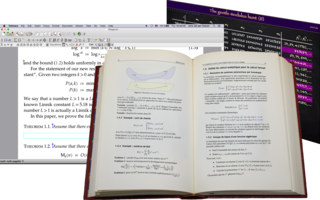 W
WGNU TeXmacs is a scientific word processor and typesetting component of the GNU Project. It was inspired by TeX and GNU Emacs, though it shares no code with those programs. TeXmacs does use TeX fonts. It is written and maintained by Joris van der Hoeven and a group of developers. The program produces structured documents with a WYSIWYG user interface. New document styles can be created by the user. The editor provides high-quality typesetting algorithms and TeX and other fonts for publishing professional looking documents.
 W
WGnus, or Gnus Network User Services, is a message reader which is part of GNU Emacs. It supports reading and composing both e-mail and news and can also act as an RSS reader, web processor, and directory browser for both local and remote filesystems.
 W
WJames Arthur Gosling, often referred to as "Dr. Java", OC is a Canadian computer scientist, best known as the founder and lead designer behind the Java programming language.
 W
WJOVE is an open-source, Emacs-like text editor, primarily intended for Unix-like operating systems. It also supports MS-DOS and Microsoft Windows. JOVE was inspired by Gosling Emacs but is much smaller and simpler, lacking Mocklisp. It was originally created in 1983 by Jonathan Payne while at Lincoln-Sudbury Regional High School in Massachusetts, United States on a PDP-11 minicomputer. JOVE was distributed with several releases of BSD Unix, including 2.9BSD, 4.3BSD-Reno and 4.4BSD-Lite2.
 W
WEmacs Lisp is a dialect of the Lisp programming language used as a scripting language by Emacs. It is used for implementing most of the editing functionality built into Emacs, the remainder being written in C, as is the Lisp interpreter. Emacs Lisp is also termed Elisp, although there is also an older, unrelated Lisp dialect with that name.
 W
WMagit is an interface to the Git version control system (a Git Client), implemented as an GNU Emacs package written in Elisp. It is made available through the MELPA package repository, on which it is the most-downloaded non-library package, with two and a half million downloads as of September 2020.
 W
Wmg, originally called MicroGnuEmacs, is a public-domain text editor that runs on Unix-like operating systems. It is based on MicroEMACS, but intended to more closely resemble GNU Emacs while still maintaining a small memory footprint and fast speed. An expanded version of the original is included as part of OpenBSD, where it is maintained, and snapshots of the OpenBSD version are available in the native package management trees of many other systems, including MacPorts, FreeBSD Ports, pkgsrc and Debian.
 W
WMicroEMACS is a small, portable Emacs-like text editor originally written by Dave Conroy in 1985, and further developed by Daniel M. Lawrence (1958–2010) and was maintained by him. MicroEMACS has been ported to many operating systems, including CP/M, MS-DOS, Microsoft Windows, VAX/VMS, Atari ST, AmigaOS, OS-9, and various Unix-like operating systems.
 W
WMINCE is a text editor for microcomputers that run the CP/M operating system. Developed in BDS C by Mark of the Unicorn, it was bundled with computers from Kaypro and Morrow Designs, and the Epson QX-10. It was a subset of Emacs designed to run within the 64kB memory limit of 8-bit computers.
 W
WErik Naggum was a Norwegian computer programmer recognized for his work in the fields of SGML, Emacs and Lisp. Since the early 1990s he was also a provocative participant on various Usenet discussion groups.
 W
WPlanner is a free personal information manager for Emacs written in Emacs Lisp.
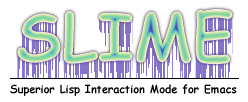 W
WSLIME, the Superior Lisp Interaction Mode for Emacs, is an Emacs mode for developing Common Lisp applications. SLIME originates in an Emacs mode called SLIM written by Eric Marsden. It is developed as an open-source public domain software project by Luke Gorrie and Helmut Eller. Over 100 Lisp developers have contributed code to SLIME since the project was started in 2003. SLIME uses a backend called Swank that is loaded into Common Lisp.
 W
WSpacemacs is a configuration framework for GNU Emacs. It can take advantage of all of GNU Emacs' features, including both graphical and command-line user interfaces, and being executable under X Window System and within a Unix shell terminal. It is free and open-source software (FOSS) released under the GNU General Public License version 3.
 W
WRichard Matthew Stallman, also known by his initials, rms, is an American free software movement activist and programmer. He campaigns for software to be distributed in a manner such that its users receive the freedoms to use, study, distribute, and modify that software. Software that ensures these freedoms is termed free software. Stallman launched the GNU Project, founded the Free Software Foundation, developed the GNU Compiler Collection and GNU Emacs, and wrote the GNU General Public License.
 W
WGuy Lewis Steele Jr. is an American computer scientist who has played an important role in designing and documenting several computer programming languages and technical standards.
 W
Ww3m is a free software/open source text-based web browser and terminal pager. It has support for tables, frames, SSL connections, color, and inline images on suitable terminals. Generally, it renders pages in a form as true to their original layout as possible.
 W
WXEmacs is a graphical- and console-based text editor which runs on almost any Unix-like operating system as well as Microsoft Windows. XEmacs is a fork, based on a version of GNU Emacs from the late 1980s. Any user can download, use, and modify XEmacs as free software available under the GNU General Public License version 2 or any later version.
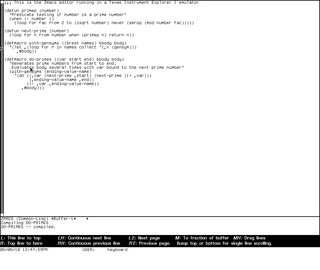 W
WZmacs is one of the many variants of the Emacs text editor. Zmacs was written for the MIT Lisp machine and runs on its descendants. Zmacs is written in Lisp Machine Lisp. It is based on the ZWEI programming substrate, which stands for "Zwei Was EINE Initially"; Zwei was a collection of routines which could be used to easily implement other programs, like the Symbolics mail program, Zmail.